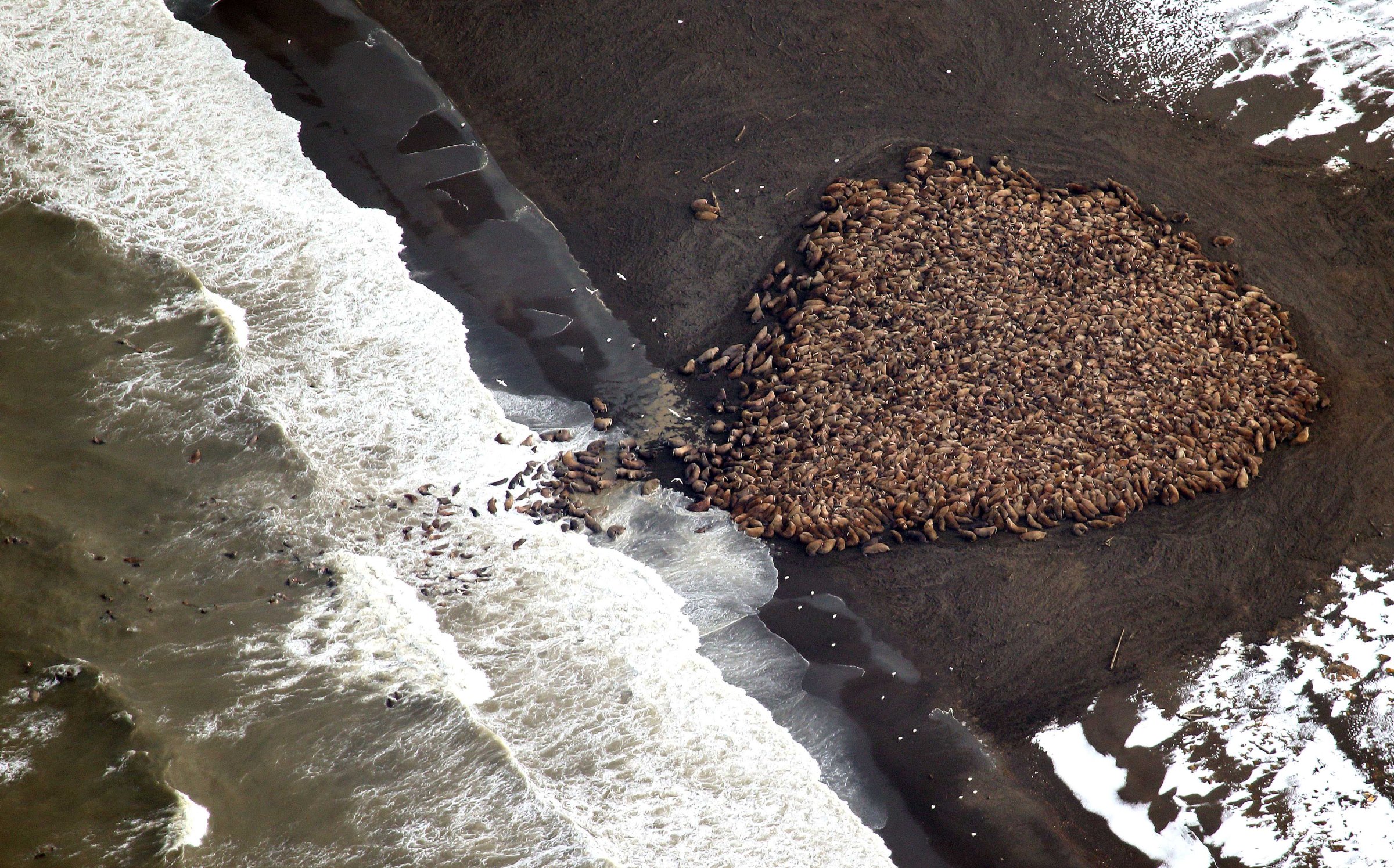
Nearly 35,000 walruses were discovered this month on a northwest Alaskan shore as result of being unable to find sea ice to rest upon, a problem aggravated by climate change, the National Oceanic and Atmospheric Administration (NOAA) said.
The unusually massive walrus gatherings were first spotted on Sept. 13 when NOAA conducted its annual arctic marine mammal aerial survey, a spokeswoman told the Associated Press.
The marine mammals use sea ice as diving platforms to hunt for food in shallow areas, or as resting points to avoid long, exhausting swims. While it is normal for sea ice to recede into deeper parts of the Arctic Ocean as temperatures warm in the summer, in recent years the ice has moved even further.
According to the World Wildlife Fund (WWF), the accelerated loss of sea ice is associated with climate change, in which open water absorbs more heat and speeds up the melting process. WWF estimated that Arctic ice loss was 3.5 to 4.1% each decade between 1979 and 2012.
The habitat destruction has contributed to large groups of walruses arriving on shore. Walrus gatherings were first spotted near Alaskan shores in 2007, and they returned in 2009 and 2011, experts at the NOAA said.
“The walruses are telling us what the polar bears have told us and what many indigenous people have told us in the high Arctic,” Margaret Williams, managing director at the WWF, told AP. “And that is that the Arctic environment is changing extremely rapidly and it is time for the rest of the world to take notice and also to take action to address the root causes of climate change.”
More Must-Reads from TIME
- Donald Trump Is TIME's 2024 Person of the Year
- Why We Chose Trump as Person of the Year
- Is Intermittent Fasting Good or Bad for You?
- The 100 Must-Read Books of 2024
- The 20 Best Christmas TV Episodes
- Column: If Optimism Feels Ridiculous Now, Try Hope
- The Future of Climate Action Is Trade Policy
- Merle Bombardieri Is Helping People Make the Baby Decision
Contact us at letters@time.com